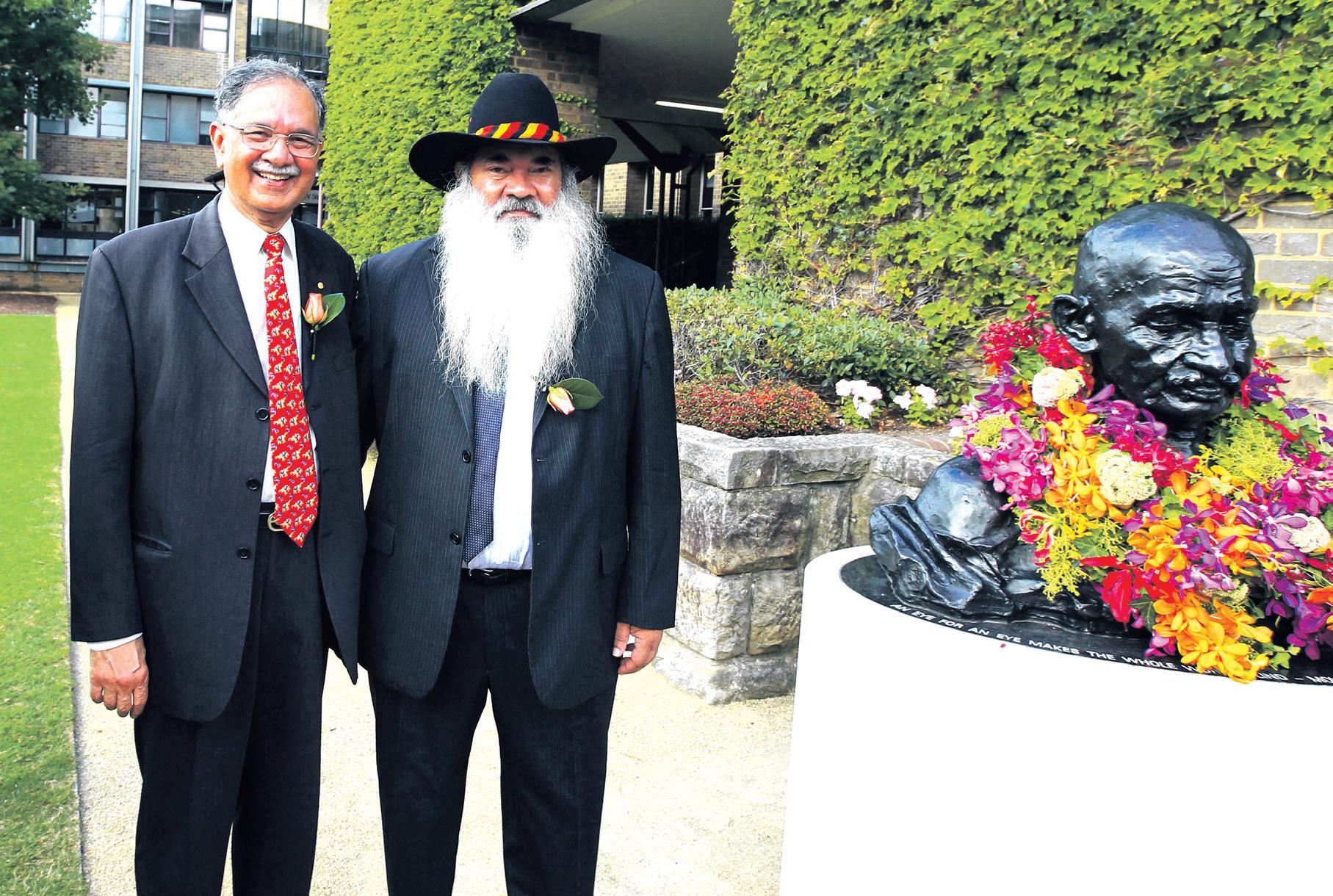
3 minute read
‘Australia’s Gandhi’
from 2012-02 Sydney (1)
by Indian Link
people, Prof. Dodson said the proposition is neither radical nor new. “The Constitutions of countries such as Canada, South Africa and India all contain similar non-racial discrimination provisions… such a provision would bring us into step with international standards”.
It is a relatively simple matter of recognition of the First Peoples of this land, he added.
Yet Prof. Dodson did not condone the aggressive behaviour at the Tent Embassy event. But he asked for the perpetrators not to be judged, saying they were merely asserting their political position, and asked for consideration of their sense of oppression.
Prof. Dodson also took offence at the discourse in Aboriginal affairs being largely about “us having to conform to a new set of rules or be inducted into yet another set of implementation strategies, all authored by outside agencies… If there is any parallel with Gandhi’s wish to get the Empire out of India, it would be the desire to displace the authoritative position of the public service from the lives of the Aboriginal people so that our values might again find expression”.
He also echoed Gandhiji’s despair at the propensity of Western civilization and modernisation to disconnect people from their spirituality and connection to nature, and stressed the need for ecological and social balance to be restored in the face of rampant commercialization.
In his closing remarks, Neville Roach felt compelled to declare that though Pat Dodson has been called the closest Australia has to a Nelson Mandela, he himself would go so far as to say, Pat Dodson is the closest Australia has to a Mahatma Gandhi.
bringing out clearly the parallels with Gandhi’s life and principles. He spoke freely, frankly and comprehensively about the issues facing Indigenous people, about justice and fairness and about how difficult it will be to get the proposed amendment through.”
Neville admits he was concerned about the controversial aspect of it all.
“Of course I totally support everything Pat has to say, but you know, there are people against! But at the end of the talk the whole auditorium was up on its feet applauding,” he concluded.
Behind the scenes
It was Amit Dasgupta, Consul General of India (Sydney) that came up with the idea of instituting an annual Gandhi oration, Neville Roach revealed.

The ‘Gandhi Address’, it was decided, would be delivered by a non-Indian person whose own life has been influenced by Gandhi’s values and beliefs.
“The challenge was to find an appropriate speaker,” Mr. Roach said. “I have always admired and respected Prof. Dodson, who has stood out in matters of Aboriginal welfare. He is calm and collected yet strong, with an active but reasoned and certainly non-violent approach. But he is based in Broome, and when we approached him last year he was heavily engaged in cochairing the panel on constitutional change, travelling around the country consulting with Indigenous communities. Jane Cunningham of the Kimberley Institute understood how keen we were to get him for a 2 Oct event (to coincide with Gandhi Jayanti), but she said he would only be available maybe November.
Martyrs’ Day”.
As someone whose current mission in life seems to be to make Australia more India-savvy (his own words), Neville Roach wanted to make the event a significant one. He was thrilled to see a packed auditorium on the night.
“By the first week of January we had 400 registrations even though it was the holiday period, and by the last week, we had crossed 800. Ultimately just over 700 people attended. I’m a great believer in big events, and luckily for me, functions at the UNSW - a great location really - have always turned out that way. The last function we did there was the lecture by Rajinder Pachauri of the Inter Governmental Panel on Climate Change; before that the Brain Food series of talks, all of them packed to the rafters”.
For now, the challenge for Mr. Roach is to find someone who can match Pat Dodson for next year’s event.
“Pat has set a very high benchmark, and we will have to put our thinking caps on!” he says.
Remembrance Ceremony
The Remembrance Ceremony that was held earlier in the evening was bust that sits serenely at UNSW’s Library Lawn was garlanded, and then the First Information Report (FIR) recorded upon the death of Gandhiji was read out by Amit Dasgupta. (This is a written document prepared by the police when they receive information about the commission of a cognizable offence). It records the statement of a witness by the name of Nand Lal Mehta, who described the arrival of Gandhi at the prayer meeting at Delhi’s Birla House supported by his two granddaughters, his welcoming ‘Namaste’ to people on the sides of the footpath, the emergence of assassin of Nathuram Godse and the firing of three shots pointblank, Gandhi’s collapse to the ground, the apprehension of Nathuram and the carrying away of Gandhiji to the house.
Sixty-four years to the day, the sheer enormity of the event that occurred on January 30, 1948 was palpable in the crowd gathered at the UNSW. It brought them immediately closer to the man in whose honour the event had been organised that day.
“I thought it was fitting to have that reading,” Neville revealed later. “Even Pat mentioned how moved he was.”










